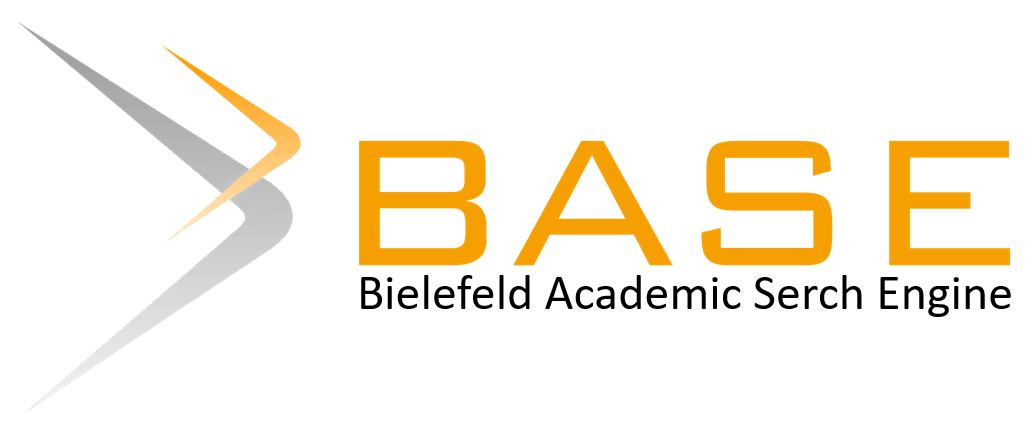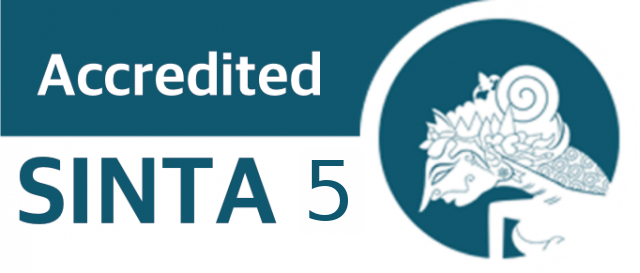Terapi Kombinasi Poli Peptida Topikal Dan Gel Astaxantin Pada Ulkus Fenomena Lucio
DOI:
https://doi.org/10.30595/hmj.v5i2.12348Keywords:
astaxantin, fenomena Lucio, kusta, lepromatosa difus, polipeptidaAbstract
Lucio’s leprosy, also known as diffuse lepromatous leprosy, is a non-nodular and diffuse form of LL type leprosy caused by chronic infection with Mycobacterium lepromatous. Lucio’s phenomenon (LP) or type III leprosy reaction is a vasculitis-like leprosy reaction that can occur in untreated leprosy (Lucio’s leprosy). Multidrug therapy (MTD) for multibacillary leprosy (MB) was used in conjunction with corticosteroids to treat LP. Antibiotics and wound care are critical in preventing sepsis complications. Topical polypeptide and astaxanthin gel are both effective in the treatment of ulcers. We report the case of a 53-year-old man who presented to the Emergency Department of Dr. Moewardi Hospital Surakarta with red spots on his fingers and toes that developed into blisters and sores. Histopathological examination revealed a picture consistent with LP. Aeromonas hydrophyla bacteria were identified in pus cultures that are susceptible to gentamycin antibiotics. As recommended, the patient received systemic corticosteroids, specifically methylprednisolone IV 62.5 mg/24 hours as LP therapy and MDT treatment for MB leprosy. Additionally, the patient received systemic antibiotic gentamycin 80 mg/24 hours intravenously, and ulcer treatment with a topical polypeptide and astaxanthin gel applied to the skin. After three months of MDT therapy and treatment, patients’ ulcers improved. LP management and wound care help to reduce LP patients’ mortality and morbidity. Adjuvant therapy with topical polypeptide and astaxanthin may be used to repair ulcers in LP.
Kusta Lucio atau kusta lepromatosa difus, merupakan variasi kusta tipe LL yang bersifat non nodular dan difus yang dihubungkan dengan infeksi kronis bakteri M.Lepromatosa. Fenomena Lucio (FL) atau reaksi kusta tipe III adalah suatu reaksi kusta dengan gambaran vaskulitis dapat terjadi pada (kusta Lucio) tidak diobati. Terapi multi drug terapy (MDT) kusta tipe multibasiler (MB) dan kortikosteroid diberikan untuk mengatasi FL. Perawatan luka dan antibiotik penting diberikan untuk mencegah komplikasi sepsis. Polipeptida dan astaxantin gel topikal memiliki efektivitas yang baik dalam penyembuhan ulkus. Kami melaporkan kasus seorang laki-laki berusia 53 tahun yang datang ke Instalasi Gawat Darurat Rumah Sakit Dr.Moewardi Surakarta dengan keluhan muncul bercak kemerahan yang kemudian menjadi lepuh dan luka pada jari-jari tangan dan kedua kaki. Pemeriksaan histopatologi didapatkan gambaran yang sesuai dengan FL. Pada pemeriksaan kultur pus didapatkan bakteri Aeromonas hydrophyla yang sensitif terhadap antibiotik gentamisin. Pasien diberikan kortikosteroid sistemik yaitu metilprednisolon IV 62.5mg/24 jam sebagai terapi FL dan pengobatan MDT kusta tipe MB sesuai yang direkomendasikan, pasien diberi antibiotik sistemik gentamisin 80 mg/24 jam intravena serta perawatan ulkus dengan polipeptida topikal dan astaxantin gel yang diaplikasikan pada ulkus pasien. Ulkus pada pasien mengalami perbaikan setelah 3 bulan menjalani terapi dan pengobatan MDT. Penatalaksanaan FL dan perawatan luka akan mengurangi mortalitas dan morbiditas pasien FL. Polipeptida topikal dan astaxantin dapat dijadikan terapi ajuvan untuk perbaikan ulkus pada FL.
References
style='font-size:10.0pt'>
yes'>ADDIN Mendeley Bibliography CSL_BIBLIOGRAPHY
style='mso-element:field-separator'>1. Salgado C, de Brito A, Salgado U, JS S. Leprosy. In: Kang S, Amaragai M, Brucjner A, Enk A, Margolis D, McMichael A, editors. Fitzpatrick’s Dermatology. 9th Editio. McGraw Hill; 2019. p. 2892–924.
2. Rodriguez O, de Lucio L. Historia y concepto. Dermatol Rev Mex. 1978;22:117–40.
3. Jurado F, Rodriguez O, Novales J, Navarrete G, Rodriguez M. Lucio’s leprosy: A clinical and therapeutic challenge. Clin Dermatol [Internet]. 2015;33(1):66–78. Available from: http://dx.doi.org/10.1016/j.clindermatol.2014.07.004
4. Rocha RH, Emerich PS, Diniz LM, De Oliveira MBB, Cabral ANF, Do Amaral ACV. Lucio’s phenomenon: Exuberant case report and review of Brazilian cases. An Bras Dermatol. 2016;91(5):60–3.
5. Han XY, Seo YH, Sizer KC, Schoberle T, May GS, Spencer JS, et al. A new Mycobacterium species causing diffuse lepromatous leprosy. Am J Clin Pathol. 2008;130(6):856–64.
6. Choon SE, Tey KE. Lucio’s phenomenon: A report of three cases seen in Johor, Malaysia. Int J Dermatol. 2009;48(9):984–8.
7. Che Ya SN, Muhamad R, Zakaria R, Ishak A, Abdullah WNHW. Lucio Phenomenon: Sequelae of Neglected Leprosy. Korean J Fam Med. 2021;42(3):245–9.
8. Latapi F, Chevez Z. The“ Spotted” Leprosy of Lucio (La lepra“ Manchada” de Lucio). Int J Lepr. 1948;16(4):421–30.
9. Kavya M, Sacchidanand S. Lucio’s Phenomenon: A Rare Case Report. Int J Basic Appl Med Sci. 2013;3(2):325–30.
10. Ang P, Tay YK, Ng SK, Seow CS. Fatal Lucio’s phenomenon in 2 patients with previously undiagnosed leprosy. J Am Acad Dermatol. 2003;48(6):958–61.
11. Rea T, Jerskey R. Clinical and Histologic Variations Among Thirty Patients with Lucio’s Phenomenon and Pure and Primitive Diffuse Lepromatosis (Latapi’s Lepromatosis). Int J Lepr. 2005;73(3):169–88.
12. Sehgal VN. Lucio’s phenomenon/erythema necroticans. Int J Dermatol. 2005;44(7):602–5.
13. Herath S, Navinan MR, Liyanage I, Rathnayaka N, Yudhishdran J, Fernando J, et al. Lucio’s phenomenon, an uncommon occurrence among leprosy patients in Sri Lanka. BMC Res Notes. 2015;8(1):4–9.
14. Schultz GS, Sibbald RG, Falanga V, Ayello EA, Dowsett C, Harding K, et al. Wound bed preparation: a systematic approach to wound management. Wound repair Regen Off Publ Wound Heal Soc [and] Eur Tissue Repair Soc. 2003 Mar;11 Suppl 1:S1-28.
15. Cassino R, Ricci E. Effectiveness of topical application of amino acids to chronic wounds: A prospective observational study. J Wound Care. 2010;19(1):29–34.
16. Debats IBJG, Wolfs TGAM, Gotoh T, Cleutjens JPM, Peutz-Kootstra CJ, van der Hulst RRWJ. Role of arginine in superficial wound healing in man. Nitric Oxide - Biol Chem [Internet]. 2009;21(3–4):175–83. Available from: http://dx.doi.org/10.1016/j.niox.2009.07.006
17. Wu G, Bazer FW, Davis TA, Kim SW, Li P, Marc Rhoads J, et al. Arginine metabolism and nutrition in growth, health and disease. Amino Acids. 2009 May;37(1):153–68.
18. Ellinger S. Micronutrients, Arginine, and Glutamine: Does Supplementation Provide an Efficient Tool for Prevention and Treatment of Different Kinds of Wounds? Adv Wound Care. 2014;3(11):691–707.
19. Newsholme P. Glutamine Metabolism: Nutritional and Clinical Significance Why Is L-Glutamine Metabolism Important to Cells of the Immune System in Health, Postinjury, Surgery or Infection? J Nutr. 2001;131(January):2515–22.
20. Meephansan J, Rungjang A, Yingmema W, Deenonpoe R, Ponnikorn S. Effect of astaxanthin on cutaneous wound healing. Clin Cosmet Investig Dermatol. 2017;10:259–65.
style='font-size:10.0pt'>
Salgado C, de Brito A, Salgado U, JS S. Leprosy. In: Kang S, Amaragai M, Brucjner A, Enk A, Margolis D, McMichael A, editors. Fitzpatrick’s Dermatology. 9th Editio. McGraw Hill; 2019. p. 2892–924.
2. Rodriguez O, de Lucio L. Historia y concepto. Dermatol Rev Mex. 1978;22:117–40.
3. Jurado F, Rodriguez O, Novales J, Navarrete G, Rodriguez M. Lucio’s leprosy: A clinical and therapeutic challenge. Clin Dermatol [Internet]. 2015;33(1):66–78. Available from: http://dx.doi.org/10.1016/j.clindermatol.2014.07.004
4. Rocha RH, Emerich PS, Diniz LM, De Oliveira MBB, Cabral ANF, Do Amaral ACV. Lucio’s phenomenon: Exuberant case report and review of Brazilian cases. An Bras Dermatol. 2016;91(5):60–3.
5. Han XY, Seo YH, Sizer KC, Schoberle T, May GS, Spencer JS, et al. A new Mycobacterium species causing diffuse lepromatous leprosy. Am J Clin Pathol. 2008;130(6):856–64.
6. Choon SE, Tey KE. Lucio’s phenomenon: A report of three cases seen in Johor, Malaysia. Int J Dermatol. 2009;48(9):984–8.
7. Che Ya SN, Muhamad R, Zakaria R, Ishak A, Abdullah WNHW. Lucio Phenomenon: Sequelae of Neglected Leprosy. Korean J Fam Med. 2021;42(3):245–9.
8. Latapi F, Chevez Z. The“ Spotted” Leprosy of Lucio (La lepra“ Manchada” de Lucio). Int J Lepr. 1948;16(4):421–30.
9. Kavya M, Sacchidanand S. Lucio’s Phenomenon: A Rare Case Report. Int J Basic Appl Med Sci. 2013;3(2):325–30.
10. Ang P, Tay YK, Ng SK, Seow CS. Fatal Lucio’s phenomenon in 2 patients with previously undiagnosed leprosy. J Am Acad Dermatol. 2003;48(6):958–61.
11. Rea T, Jerskey R. Clinical and Histologic Variations Among Thirty Patients with Lucio’s Phenomenon and Pure and Primitive Diffuse Lepromatosis (Latapi’s Lepromatosis). Int J Lepr. 2005;73(3):169–88.
12. Sehgal VN. Lucio’s phenomenon/erythema necroticans. Int J Dermatol. 2005;44(7):602–5.
13. Herath S, Navinan MR, Liyanage I, Rathnayaka N, Yudhishdran J, Fernando J, et al. Lucio’s phenomenon, an uncommon occurrence among leprosy patients in Sri Lanka. BMC Res Notes. 2015;8(1):4–9.
14. Schultz GS, Sibbald RG, Falanga V, Ayello EA, Dowsett C, Harding K, et al. Wound bed preparation: a systematic approach to wound management. Wound repair Regen Off Publ Wound Heal Soc [and] Eur Tissue Repair Soc. 2003 Mar;11 Suppl 1:S1-28.
15. Cassino R, Ricci E. Effectiveness of topical application of amino acids to chronic wounds: A prospective observational study. J Wound Care. 2010;19(1):29–34.
16. Debats IBJG, Wolfs TGAM, Gotoh T, Cleutjens JPM, Peutz-Kootstra CJ, van der Hulst RRWJ. Role of arginine in superficial wound healing in man. Nitric Oxide - Biol Chem [Internet]. 2009;21(3–4):175–83. Available from: http://dx.doi.org/10.1016/j.niox.2009.07.006
17. Wu G, Bazer FW, Davis TA, Kim SW, Li P, Marc Rhoads J, et al. Arginine metabolism and nutrition in growth, health and disease. Amino Acids. 2009 May;37(1):153–68.
18. Ellinger S. Micronutrients, Arginine, and Glutamine: Does Supplementation Provide an Efficient Tool for Prevention and Treatment of Different Kinds of Wounds? Adv Wound Care. 2014;3(11):691–707.
19. Newsholme P. Glutamine Metabolism: Nutritional and Clinical Significance Why Is L-Glutamine Metabolism Important to Cells of the Immune System in Health, Postinjury, Surgery or Infection? J Nutr. 2001;131(January):2515–22.
20. Meephansan J, Rungjang A, Yingmema W, Deenonpoe R, Ponnikorn S. Effect of astaxanthin on cutaneous wound healing. Clin Cosmet Investig Dermatol. 2017;10:259–65.
Downloads
Published
Issue
Section
License
For submission of manuscripts to the Herb-Medicine Journal, the authors must certify that:
I have been authorized by my co-author to submit the manuscript to the Herb-Medicine Journal
I hereby declare, on behalf of myself and my co-authors, that:
The submitted manuscript is original work and has not been published in another peer-reviewed journal or is being considered for publication by another journal. Also, the manuscript does not infringe any existing copyright or other third party rights.
The manuscript does not contain material that may violate the law, slander, or SARA, in any way, violates the terms and conditions contained in the agreement
I/we have taken care that the scientific knowledge and all other statements contained in the manuscript are in accordance with authentic facts and formulas and will not, if followed appropriately, harm the user
No liability shall be assumed by Herb-Medicine Journal, its staff or members of the editorial board for any injury and/or damage to persons or property as a matter of product liability, negligence or otherwise, or from the use or operation of any method, product instructions, advertising , or ideas contained in publications by the Herb-Medicine Journal
Authors who publish in the Herb-Medicine Journal certify that all authors have read and agree to the contents of the Cover Letter or the Terms and Conditions. Plagiarism is strictly prohibited, and by submitting a manuscript for publication, the author agrees that the publisher has the legal right to take appropriate action against the author, if plagiarism or false information is found. Once submitted to the Herb-Medicine Journal, authors will not withdraw their manuscript at any stage prior to publication.
The author owns the copyright and grants the journal rights for first publication with the work simultaneously licensed under a Creative Commons Attribution License which allows others to share the work with acknowledgment of the work's authorship and initial publication in this journal.
Authors may enter into separate additional contractual agreements for the non-exclusive distribution of the published journal version of the work (for example, posting it to an institutional repository or publishing it in a book), with acknowledgment of its initial publication in this journal.
Authors are permitted and encouraged to post their work online (for example, in institutional repositories or on their websites) prior to and during the submission process, as this can lead to productive exchanges, as well as earlier and larger citation of published work (See The Effects of Open Access).
Untuk pengiriman naskah ke Herb-Medicine Journal, penulis harus menyatakan bahwa:
- Saya telah diberikan otorisasi oleh rekan penulis saya untuk memasukkan naskah ke Herb-Medicine Journal
- Saya dengan ini menyatakan, atas nama saya dan rekan penulis saya, bahwa:
- Naskah yang dikirimkan adalah karya asli dan belum pernah diterbitkan dalam jurnal peer-review lain atau sedang dipertimbangkan untuk diterbitkan oleh jurnal lain. Serta, naskah tidak melanggar hak cipta yang ada atau hak pihak ketiga lainnya.
- Naskah tidak mengandung materi yang mungkin melanggar hukum, memfitnah, atau SARA, dengan cara apa pun, melanggar syarat dan ketentuan yang tercantum dalam perjanjian
- Saya / kami telah berhati-hati bahwa pengetahuan ilmiah dan semua pernyataan lain yang terkandung dalam naskah sesuai dengan fakta dan formula otentik dan tidak akan, jika diikuti dengan tepat, merugikan pengguna
- Tidak ada tanggung jawab yang ditanggung oleh Herb-Medicine Journal, stafnya atau anggota dewan editorial untuk setiap cedera dan/atau kerusakan pada orang atau properti sebagai masalah pertanggungjawaban produk, kelalaian atau sebaliknya, atau dari penggunaan atau pengoperasian metode, produk apa pun instruksi, iklan, atau ide yang terkandung dalam publikasi oleh Herb-Medicine Journal
Penulis yang menerbitkan dalam Herb-Medicine Journal menyatakan bahwa semua penulis telah membaca dan menyetujui isi Surat Pengantar atau Syarat dan Ketentuan. Plagiarisme dilarang keras, dan dengan menyerahkan naskah untuk publikasi, penulis setuju bahwa penerbit memiliki hak hukum untuk mengambil tindakan yang pantas terhadap penulis, jika ditemukan plagiarisme atau informasi palsu. Setelah diserahkan ke Herb-Medicine Journal, penulis tidak akan menarik naskah mereka pada tahap apa pun sebelum dipublikasikan.
Penulis memiliki hak cipta dan memberikan hak jurnal untuk publikasi pertama dengan karya yang secara simultan dilisensikan di bawah Lisensi Creative Commons Attribution yang memungkinkan orang lain untuk berbagi karya dengan pengakuan kepengarangan karya dan publikasi awal dalam jurnal ini.
Penulis dapat membuat perjanjian kontrak tambahan yang terpisah untuk distribusi non-eksklusif versi jurnal yang diterbitkan dari karya tersebut (misalnya, mempostingnya ke repositori institusional atau menerbitkannya dalam sebuah buku), dengan pengakuan atas publikasi awalnya di jurnal ini.
Penulis diizinkan dan didorong untuk memposting pekerjaan mereka secara online (misalnya, dalam repositori institusional atau di situs web mereka) sebelum dan selama proses pengajuan, karena dapat menyebabkan pertukaran yang produktif, serta kutipan yang lebih awal dan lebih besar dari karya yang diterbitkan (Lihat The Effect of Open Access).













